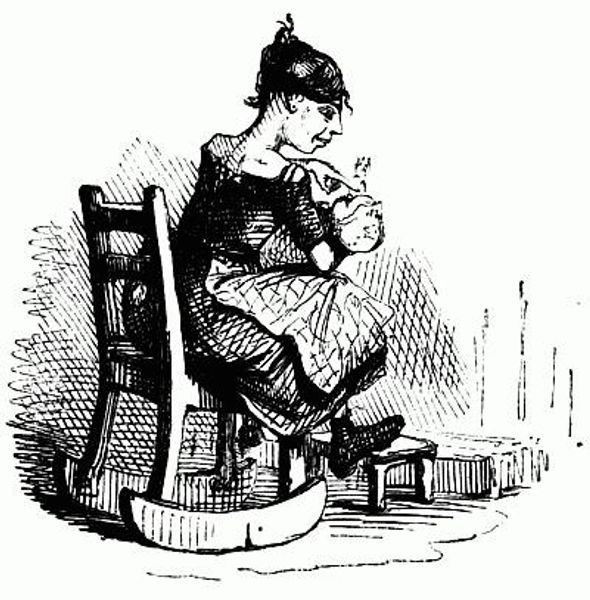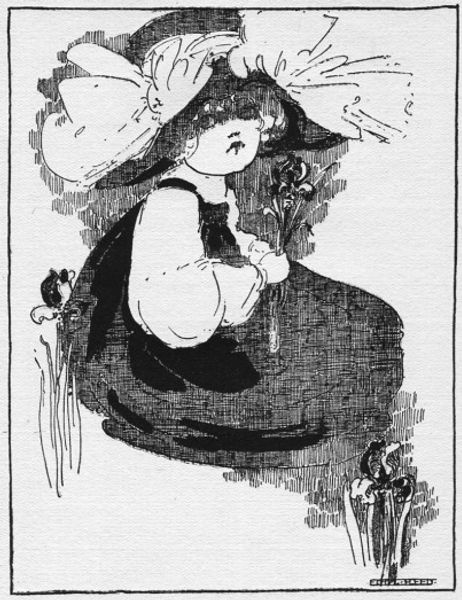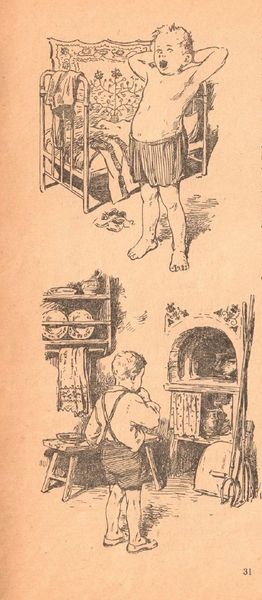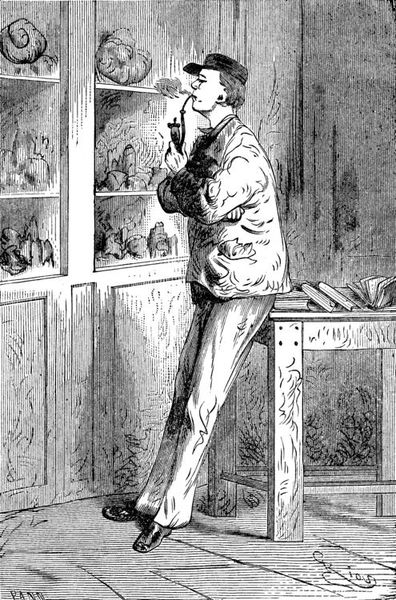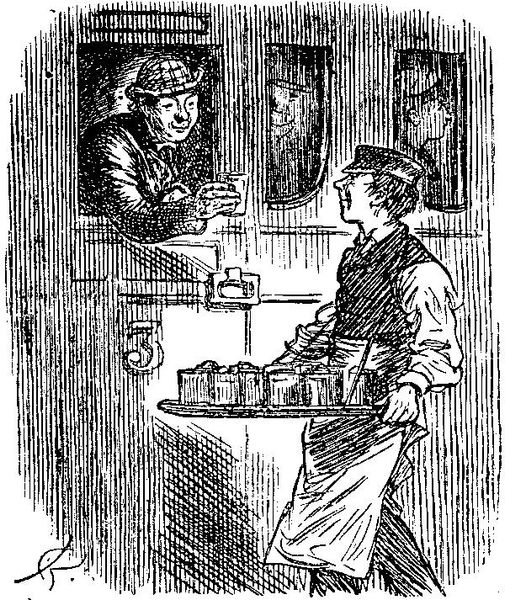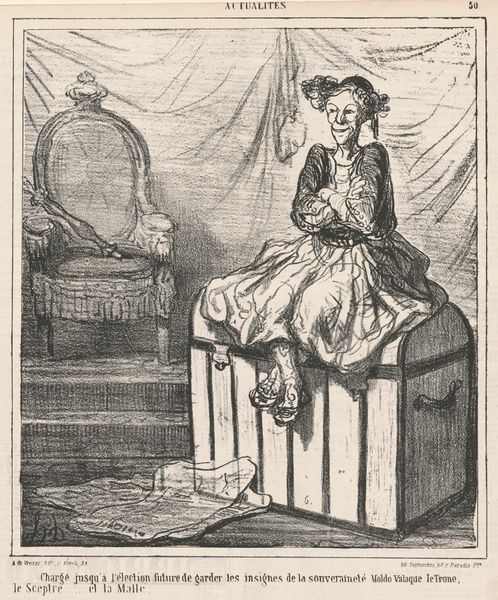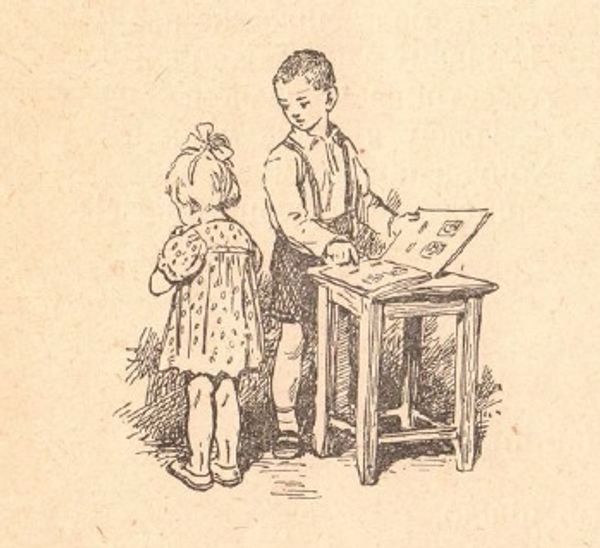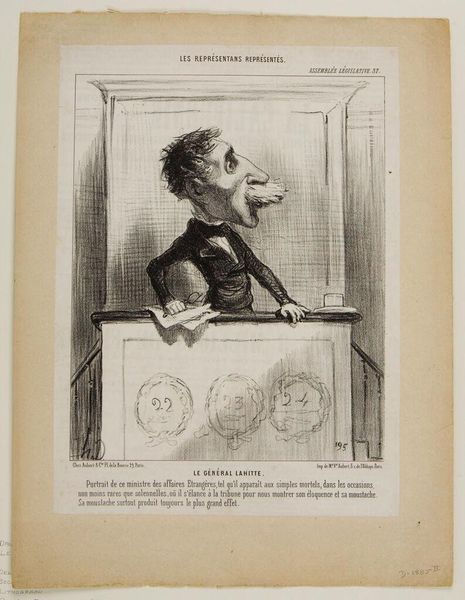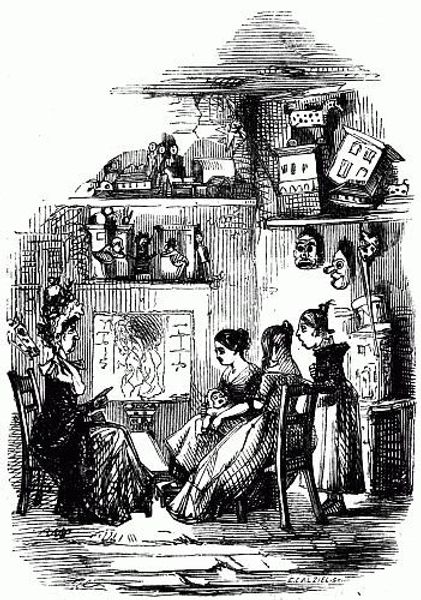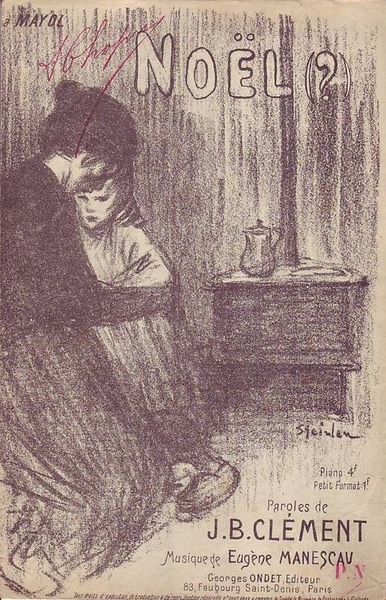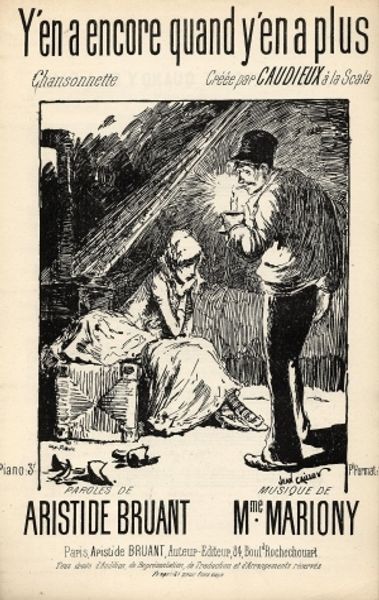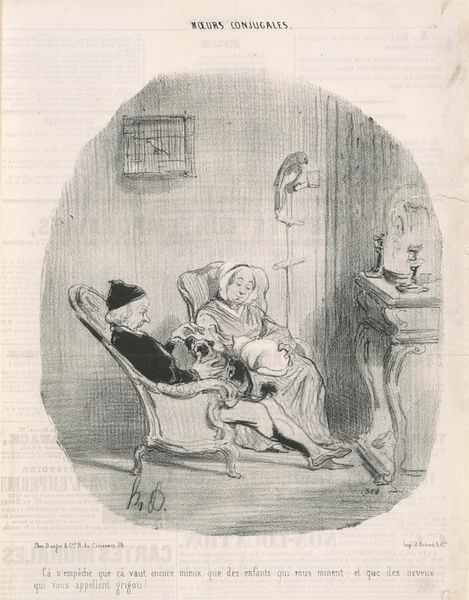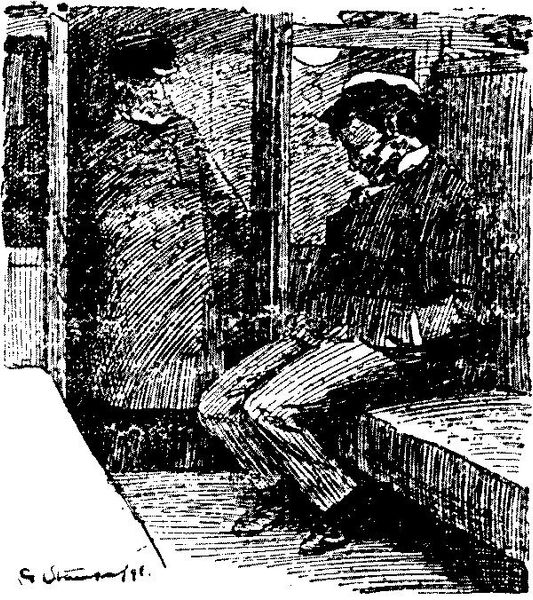
drawing, paper, ink
#
portrait
#
drawing
#
pencil sketch
#
figuration
#
paper
#
ink
#
sketch
#
pen-ink sketch
#
realism
Copyright: Public domain
Curator: Albert Aublet created this ink and pencil sketch, “Portrait Des Fräuleins,” in 1883. The work features a young girl perched rather formally in a high chair. Editor: The stark black and white and the somewhat clumsy hatching create such an interesting contrast with the presumed status of the subject. I almost want to call it endearing, because you can tell it's a young artist. Curator: Perhaps it's Aublet’s intentional juxtaposition of societal expectations for young women with the reality of girlhood itself that speaks to you. Consider the chair: its rigid structure versus the child's fluid posture, or her carefully styled hair versus her somewhat defiant gaze. It’s hard to tell exactly which of those is real and which is imagined or being performed. It speaks to feminist theory about how we present. Editor: Agreed. The chair’s odd construction does suggest commentary on the means of keeping someone contained, and of course it does this through material form. How else can this be put? Curator: Exactly, that the chair itself becomes a material metaphor for societal constraint—not unlike some period clothing. Also the use of a pencil and ink, such available and economic resources. How does it relate to your view on it? Editor: To me the simplicity points back to childhood. Pen and paper are accessible; they’re the tools of education but also recreation. Perhaps it’s intended as the beginning point of craft as a material means. The rawness in material suggests that her story is still being created. Curator: It certainly invites contemplation on the subject's agency. Does her position signify vulnerability or perhaps a quiet, brewing rebellion? It opens a wider discussion around the role of women in that era and art’s function in reinforcing or challenging those narratives. Editor: And it succeeds partially by demonstrating the humbleness behind making. The pen, ink, and paper allows the young artist to come to terms with the status quo. I see its material rawness being a conscious part of this approach. Curator: An evocative perspective on art, society, and individual expression! Editor: Indeed—making visible a fascinating link between materiality, early learning, and future trajectories.
Comments
No comments
Be the first to comment and join the conversation on the ultimate creative platform.
